PHYSICAL FITNESS AWARDS QUALIFYING STANDARDS

Unit Overview
In this unit you will be analyzing your fitness scores in the Presidential Fitness Test that you did in previous units. You will refer to The Presidential Fitness Test Record Sheet that you downloaded in a previous unit.
You will also explore ways to stay motivated by setting some personal fitness goals for yourself. You will need to refer back to the first unit for the information about SMART goals, because you will be writing some SMART fitness goals for yourself.†
We will be using the guidelines of the Presidential Fitness Test to analyze your fitness test.† We will also be using these guidelines to write several goals for your post fitness test.† You can go to the web site www.presidentschallenge.org †to learn more about the Presidentís Challenge.†
The Presidential Physical Fitness
Awards
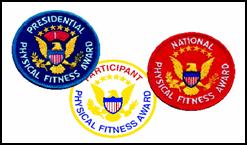
American children have been earning The Presidential Physical Fitness Awards since 1966. The following describes the various criteria for earning the awards:
- Presidential Physical Fitness Award: †Those who reach or exceed the 85th percentile (the top 15 percent of your age group) on all five items of the test are eligible to receive the Presidential Physical Fitness Award.
-
National
Physical Fitness Award:† Those who
complete the Presidentís Challenge physical fitness test items and exceed the
50th percentile on all of the test items, but who do not achieve the 85th
percentile on one or more, qualify for the National
Award.
-
Participant
Award:† Those who complete the
Presidentís Challenge physical fitness test, but do not exceed the 50th percentile
on all test items, qualify to receive the Participant Award.
†If you would like to earn any of these awards, you can go to the web site and learn how to receive each of them. Earning any of these awards should bring pride to you. You are encouraged to earn one of these awards; however, it is not a requirement for this course.
Just remember that the people who are trying to be fit and active are the real winners! As you have already learned in the previous units, each of the five items in the Presidentís Challenge Physical Fitness Award Test measures a specific aspect of fitness.† Below are the five tests that you completed in previous units.†
†
The Presidential Physical Fitness Test Items
1. Curl-ups OR Partial Curl-ups measure abdominal strength/endurance.
2. Endurance Run/Walk measures heart/lung endurance.
3. Pull-ups OR Right Angle Push-ups measure upper body strength/endurance.
4. Shuttle Run measures leg strength/power/agility.
5. V-Sit Reach measures lower back/hamstring flexibility.
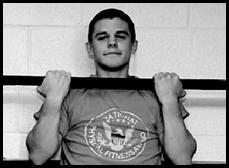
Below are the qualifying standards.† You will be referring to these standards in the question section of this unit.
To figure out which award you are eligible for, use the charts below.† The first chart shows the goals you must reach in order to achieve the 85th percentile and receive The Presidential Physical Fitness Award.† Read the chart below to find out what standards you need to meet to receive this award.
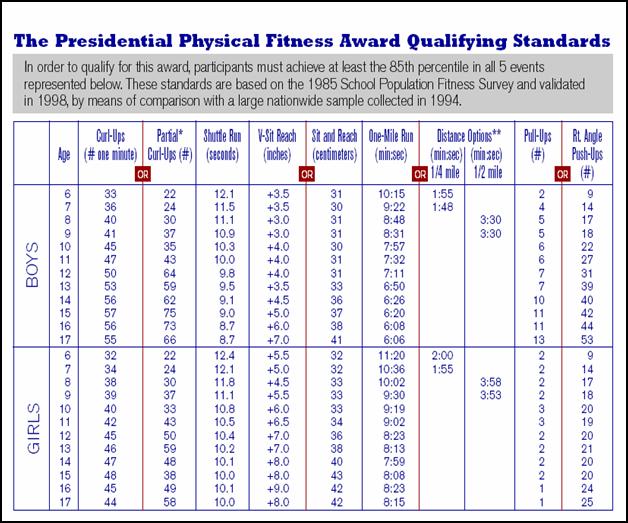
The next chart shows the standards that you must meet in order to achieve the 50th percentile and receive The National Physical Fitness Award.† Read the chart below to find out what standards you need to meet to receive this award.
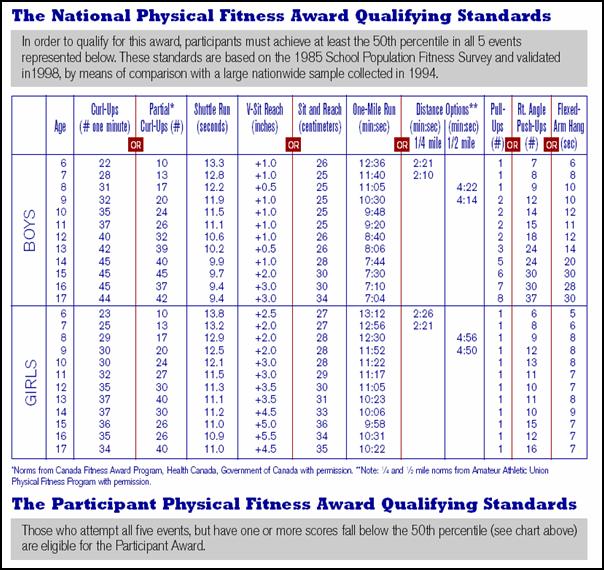
Stay Motivated!
Are you having
trouble sticking with your fitness program?†
So many people start a fitness program and then quit.† Many people stop their fitness program when
they get bored or the results they are expecting come too slowly.† Has this ever happened to you?† You are not alone if you answered in the
affirmative.† It happens to all of us at
one time or another.†† Here are a few
tips that will hopefully keep you motivated.
∑
Consider your personality
If you prefer solitude, walking, biking or in-line skating may be good choices. If group activities are more to your liking, try a class at a local fitness or martial arts center or join a volleyball or softball league. Involve your family. Walk or bike with a group of friends.
∑
Start slowly
If you push yourself too hard at first, you may be forced to abandon your program because of pain or injury. It's better to start slowly and progress gradually.
∑
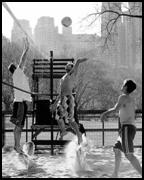 Think variety
Think variety
Vary your activities to keep yourself from getting bored. You can alternate walking or biking with swimming or a low-impact aerobics class. When the weather cooperates, do your flexibility or stretching exercises outside.† Play soccer with your family.† Join a team sport or intramurals.
∑
Have fun
You're more likely to stick with an exercise program if you're having fun.† If you're not enjoying your workouts, try something different.
∑
Try to make exercise part of your daily
routine
If it's hard to find time for exercise, schedule workouts as you would any other important activity.† Be creative! Take a walk when you have some down time during the day. Take the stairs instead of the elevator. Pedal a stationary bike while you watch TV at night.
∑
Put it on paper
Are you hoping to lose weight? Boost your energy? Sleep better?† Write it down! Seeing the benefits of regular exercise on paper may help you stay motivated.
∑
Seek support
You're not in this alone. Invite a friend or family members to join you when you exercise.† Take a class at a local fitness center with some of your friends.
∑
Track your progress
It may help to keep an exercise diary. Record what you did during each exercise session, how long you exercised and how you felt afterwards. Recording your efforts can help you work toward your goals and remind you that you're making progress.
∑
Reward yourself
After each exercise session, take
a few minutes to sit down and relax. Reflect on what you've just
accomplished.† Write down your thoughts
in a fitness journal.† Savor the good
feelings that exercise gives you. This type of internal reward can help you
make a long-term commitment to regular exercise.† External rewards can help, too. When you
reach a longer range goal, treat yourself to a new outfit or some new music to
enjoy while you exercise.
∑ Be flexible
If you're too busy to work out or simply don't feel up to it, take a day or two off. Be gentle with yourself if you need a break. The important thing is to get back on track when you feel better.

Setting Goals
Goal-setting is the art that makes everything else possible. It adds aim to energy, focuses effort and, for some, structures time. Surveys show that people who plan ahead are much more successful over the long term than those who plunge in without knowing where they're going or how they'll get there. You wouldn't take a long road trip without a map, so it makes good sense to have a compass (and road map) for your fitness objectives.
In the first unit, you learned about SMART goals and how to write a SMART goal.† Below is a review of a SMART goal.
- S = Specific
Saying, "I'll go to exercise class," is not a specific goal. I have a clearer picture when I write, "Next week I will attend step class at 9:30 a.m. Monday, Wednesday, and Friday."
- M = Measurable
Set goals that are measurable in quality or quantity.†
- A = Attainable
In the enthusiasm of the moment we often make promises that are difficult to keep.†† Realizing that change doesn't happen overnight will help you set realistic goals you can achieve. It's the SMALL changes that are the key to permanent lifestyle change. For example, if you are trying to lose weight, you should avoid the painful rebound of crash dieting by planning to lose no more than one or two pounds a week.
- R = Realistic
Goals should be reflective of your values and compatible with your lifestyle. If not, they can be the source of distress. Success is about learning how to customize your activities to find the right fit for you.†
- T = Timely
It is not smart to plan many changes at once. This can be too threatening to your internal sense of balance. Before you begin, be certain you can identify other areas of your life that might be stressful and prevent you from doing what you want to do. For example, a workout can be an important stress reducer.† However, if it makes your schedule unmanageable, you may have to postpone a new weight training program or fitness class until it is more in keeping with a balanced lifestyle.
Write Down Your Goals

It is important to put your goals in writing. Written goals are a tangible sign
of a promise that you intend to keep.†
Written goals will also help you track your progress, make your
accomplishments more obvious, and help you identify problem areas that need
more attention. Sadly, only 5% of Americans write down goals and objectives,
but 95% of those who do succeed.
Identify Supporters and
Saboteurs
Some of us can be the lone ranger, but most people need coaches, cheerleaders
and people whose belief in us and support reminds us of our commitment to
change. The friendship and support of others will make it easier for you pass
through the sometimes difficult transition from old to new behaviors. Those
supporters will help you maintain your commitment during periods of stress.
Plan for the Unexpected
Lack of time is the most frequently mentioned reason for discontinuing a
fitness program. Life is filled with surprises, so include strategies that
assure you will make time for maintaining your commitment in the face of
changing schedules, unexpected mini-crisis, and external forces.
Reward Your Success
Set up a reward system so you can reward yourself for changed behaviors. Each
of us has different values for measuring success. Yours should be structured to
satisfy you, not others.†